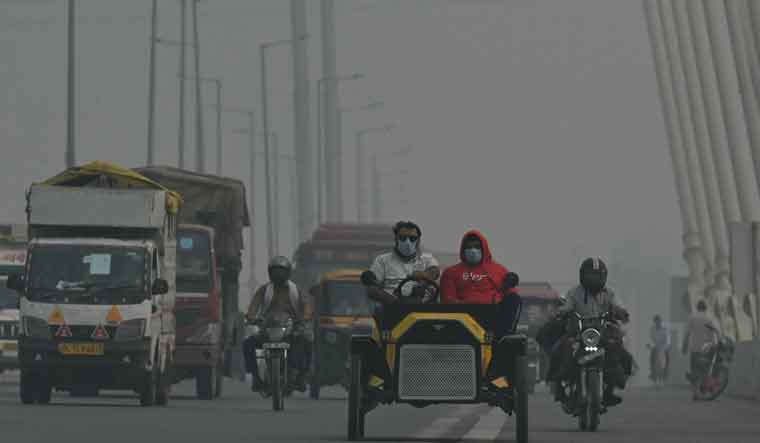Delhi Environment Minister Gopal Rai on Wednesday announced that the national capital is looking to induce artificial rains to tackle severe air pollution.
The Indian Institute of Technology (IIT) Kanpur has proposed the idea of "artificial rain" to reduce pollution levels in the national capital. This project has been in development since 2018 and in June this year, the institute conducted successful trials. A chemical powder was released into clouds at 5,000 feet by a Cessna aircraft, according to reports. This simulated the formation of raindrops and shortly after, rainfall was observed in the surrounding area.
The Delhi government will submit the detailed plan to the Supreme Court for approval on Friday. Inducing artificial rain would require moisture-laden cloud cover. Since it is expected to be cloudy on November 20-21, if approval can be obtained then the plan will be executed over those days.
Professor Sachchida Nand Tripathi, member, steering and monitoring committee, National Clean Air Programme, IIT Kanpur, stated that all the necessary apparatus for this project is ready, including an aircraft and seeding equipment.
What is artificial rain?
Artificial rain is produced through the practice of cloud seeding.
Cloud seeding is a form of weather modification. It is the process of artificially inducing or increasing precipitation by dispersing external agents, such as silver iodide, dry ice or salts, into clouds using aircraft or by dispersion devices located on the ground.
These particles act as nuclei to provide a base for snowflakes to form. After cloud seeding takes place, the newly formed snowflakes quickly grow and fall from the clouds back to the surface of the earth, resulting in rainfall. Effective cloud seeding requires the presence of clouds capable of producing precipitation as well as favourable wind patterns.
Why is it implemented?
Although scientists still debate the effectiveness of cloud seeding, it has been implemented for various reasons—to increase precipitation in areas experiencing droughts and water-shortage, to mitigate forest fires, to reduce the size of hailstones and to improve air quality by dispersing pollutants.
Is artificial rain harmful to the environment?
Silver iodide used for inducing artificial rain is not currently known to be harmful to our health. However, there are concerns about the potential environmental impact, such as unintended effects on ecosystems, water contamination, or altering natural precipitation patterns. Additionally, the process is also expensive.
Countries that have adopted cloud seeding
Cloud seeding is not new to India, it has been experimented in other parts of the country as well, including Karnataka and Maharashtra. The last cloud seeding project in Karnataka took place in 2019 by the Karnataka Rural Development and Panchayat Raj Department. During the consecutive drought years of 2014 and 2015, the Maharashtra state government resorted to using cloud seeding facilities from a private agency to generate artificial rain over Marathwada, infamous for remaining parched mostly throughout the year.
China has the biggest cloud seeding programme in the world. Ahead of the Beijing Olympics in 2008, it used rocket launchers outside the city to seed threatening clouds and cause them to release their rain before it reached the capital in order to ensure dry weather for the event.
In the United States, cloud seeding is used to increase precipitation in areas experiencing drought and to reduce the amount of fog in and around airports. It is also used in the United Arab Emirates to deal with water shortages.



